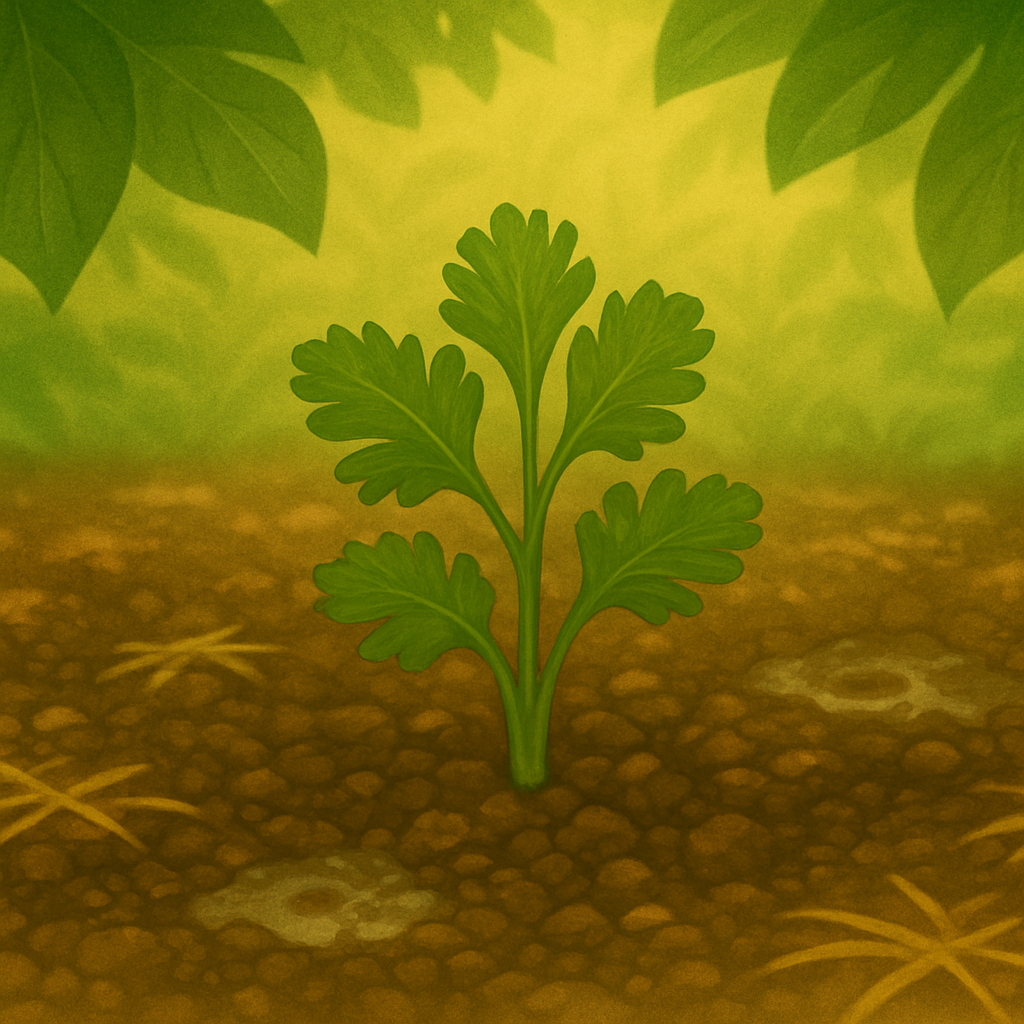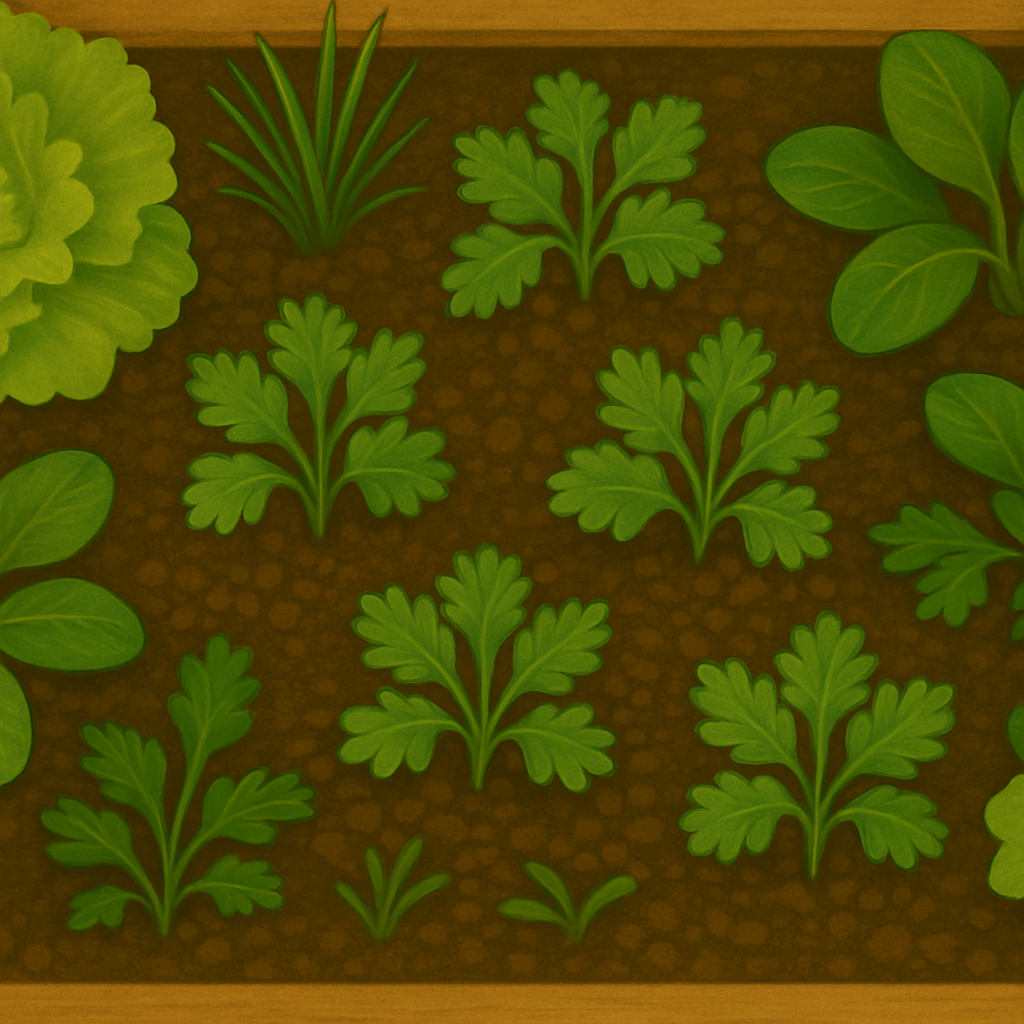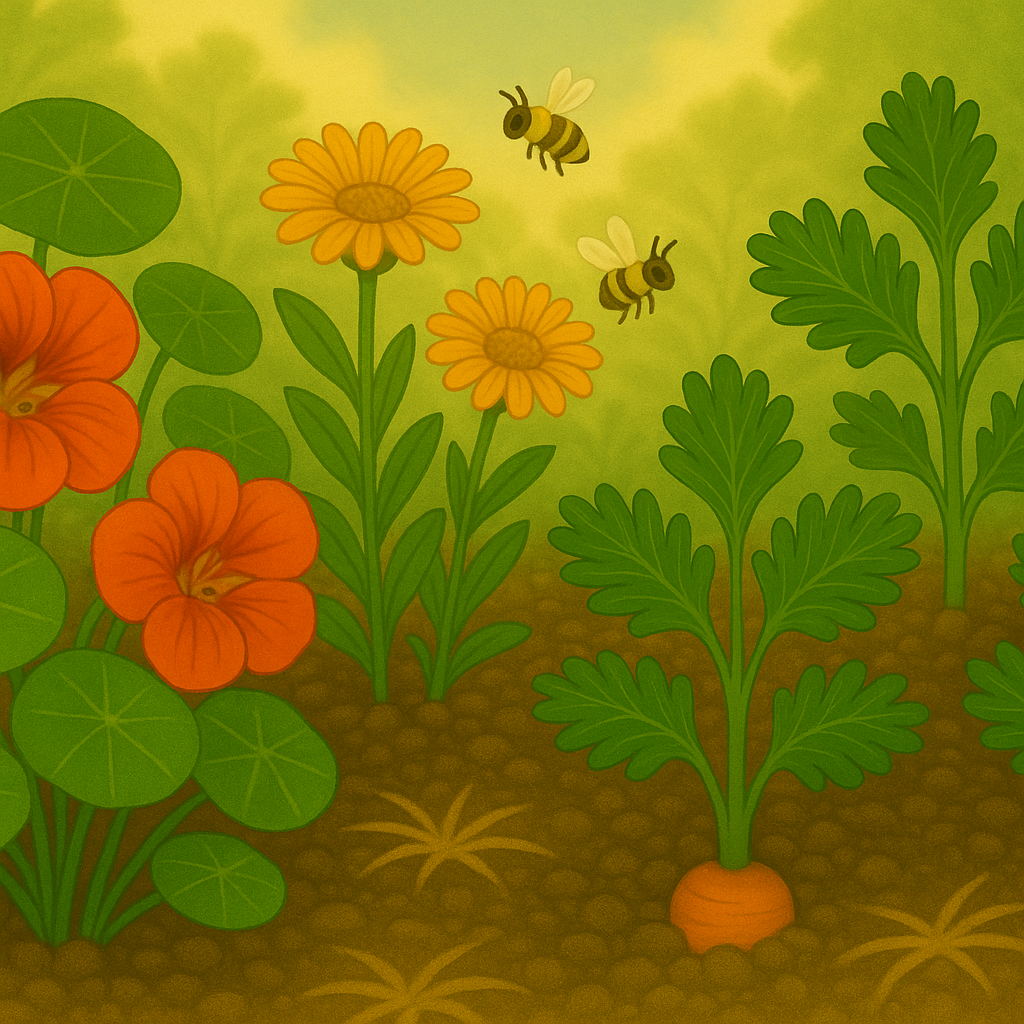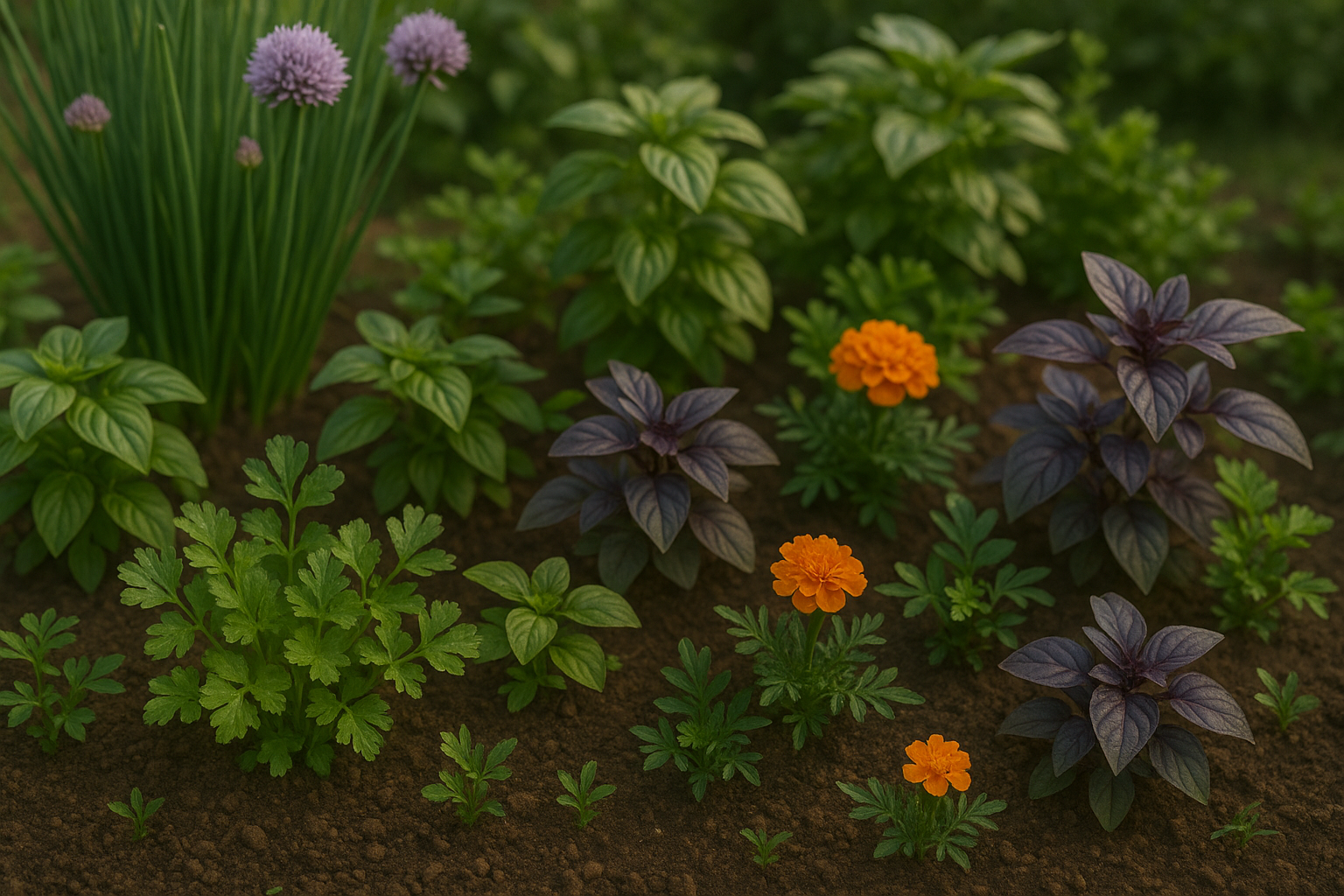Why Companion Planting Matters for Cilantro
Companion planting is a gardening technique where different plants are grown together to support each other’s health, growth, and productivity. For herbs like cilantro, companion planting offers several practical benefits that can make a noticeable difference in your garden.
By choosing the right neighbors, you can create a healthier growing environment for cilantro. For example, planting cilantro alongside basil or chives can help both thrive, as these herbs have similar water and sunlight needs. Some companions, like dill and anise, can also enhance cilantro’s flavor by subtly influencing its essential oils.
One of the biggest advantages of companion planting is natural pest control. Cilantro naturally repels certain problematic bugs, and when paired with herbs like mint or sage, it creates a barrier that deters aphids, spider mites, and other pests that can damage delicate leaves. Additionally, flowers such as marigolds or nasturtiums attract beneficial insects like ladybugs, which feed on aphids and keep pest populations in check without resorting to chemicals.
Beyond pest control, companion planting can improve soil health. Deep-rooted companions like carrots help break up soil, improving aeration and allowing cilantro’s roots to grow more freely. Leguminous plants, such as beans, also add nitrogen back into the soil, providing a gentle nutrient boost that supports leafy growth.
Try grouping cilantro with a mix of compatible herbs, veggies, and flowers in containers or garden beds to maximize flavor, minimize pests, and boost overall plant resilience for a more fruitful harvest.
Cilantro’s Growing Needs and Best Conditions

Cilantro thrives best in well-drained, loamy soil rich in organic matter, so amending your garden bed with compost before planting makes a big difference. Aim for a spot that gets morning sun and partial afternoon shade—while cilantro enjoys sunlight, too much harsh midday light can quickly cause it to bolt or go to seed prematurely.
Keep the soil consistently moist but not waterlogged; a deep watering about twice a week is usually enough. You might need to water more often during hot spells, as cilantro prefers cooler temperatures between 50°F and 85°F (10°C to 29°C).
Choosing Companion Plants
Try pairing cilantro with fast-growing, cool-weather crops like lettuce, spinach, or radishes, which share similar growing needs and won’t compete heavily for nutrients. Cilantro can also help deter pests from tomatoes and peas, making it a valuable partner in the veggie patch.
However, avoid planting cilantro near crops like fennel or dill—these herbs tend to stunt each other’s growth due to competing root systems and similar nutrient demands. Slow-growing or heat-loving plants like peppers or eggplants also don’t mesh well with cilantro’s preference for cool, mild weather.
By understanding cilantro’s specific needs and matching it with compatible companions, you’ll maximize both its flavor and yield while minimizing common gardening headaches.
Top Herbs and Greens to Grow with Cilantro

If you’re looking to maximize your garden space and boost the health of your cilantro plants, growing them alongside the right herbs and greens is a smart strategy. Herbs like parsley, basil, chives, and dill make excellent companions for cilantro, as they all thrive in similar conditions—cooler weather, partial sunlight, and moist, well-drained soil.
Growing these herbs together can help you streamline watering and care routines without needing different schedules or microclimates. For example, chives repel aphids and other common pests, while dill attracts pollinators and beneficial insects like ladybugs that keep harmful bugs in check.
In addition to herbs, leafy greens such as spinach, lettuce, and arugula are ideal partners for cilantro. These greens grow quickly, appreciate the same rich soil, and can provide a little shade at the base of your cilantro, helping keep the soil cool and extending its growing season. Pairing greens with cilantro also means you can create fresh, vibrant salads straight from your own garden.
Planting a diverse mix in the same bed boosts overall resilience, discourages disease, and makes the most of available nutrients. Try tucking a few basil and lettuce plants around your cilantro patch, and you’ll notice how they all flourish—supporting each other and making garden care more rewarding and less labor-intensive.
Vegetables and Root Crops that Pair Well with Cilantro

Cilantro is a fantastic companion in the vegetable garden, especially when paired with beans, tomatoes, peppers, and carrots. These veggies thrive alongside cilantro thanks to its natural ability to repel pests like aphids and spider mites with its strong scent, offering your crops some gentle protection.
For example, planting cilantro near tomatoes can help keep tomato hornworms away, while its presence near beans may ward off bean beetles. The vibrant pepper plant also benefits since cilantro can deter annoying pests that target pepper leaves. In return, these vegetables—especially beans—can help enrich the soil with nitrogen, boosting the overall health of your garden and supporting cilantro’s growth.
Looking at root crops, carrots are a classic match for cilantro; their long taproots break up soil, improving airflow and drainage, which cilantro loves. Onions are another stellar pairing, as they repel similar insect pests and don’t compete for space thanks to their narrow growth. Growing cilantro with root crops like carrots and onions ensures both are less likely to suffer from pest problems and benefit from shared soil nutrients.
In practice, try sowing cilantro seeds between rows of carrots or onions, or interplanting them around tomato and pepper stems. This multi-layered approach not only uses your garden’s space more efficiently but also cultivates a cooperative environment where each plant supports the next—a win-win for gardeners looking for healthier, happier harvests.
Flowers That Benefit Cilantro

Planting edible flowers like nasturtiums and calendula near your cilantro is a smart, natural way to boost your herb garden’s health and resilience. Both nasturtiums and calendula attract valuable pollinators, such as bees and butterflies, bringing more life to your garden while encouraging a better harvest.
At the same time, these flowers help repel common pests that can damage your cilantro. For example, nasturtiums act as a “trap crop” for aphids, steering them away from your herbs, while calendula’s sticky pollen attracts pest-eating insects like ladybugs.
To get started, simply sow nasturtium and calendula seeds in small groups or scatter them around your cilantro and other herbs, making sure there’s enough space for each plant to grow—about 8 to 10 inches apart works well. Both flowers thrive in similar sunlight and soil conditions as cilantro, making them easy companions.
For an extra touch, choose edible-flowered varieties so you can enjoy spicy nasturtium petals or soothing calendula in salads and teas. Also, rotate your flower and herb placements each year to keep the soil healthy and pest cycles in check.
Mixing these edible flowers with your cilantro not only looks beautiful but also helps your whole garden thrive.
Plants to Avoid Near Cilantro
When planning your herb garden, it’s important to know that cilantro doesn’t get along well with certain plants, especially fennel and some aromatic herbs like dill, rosemary, and basil. Fennel is notorious for inhibiting the growth of many garden neighbors, cilantro included, by releasing allelopathic chemicals into the soil. This chemical warfare stunts root development and can seriously limit your cilantro’s harvest.
Similarly, aromatic herbs such as rosemary and basil can compete with cilantro for nutrients, sunlight, and water, especially in smaller garden plots or containers. To keep your cilantro healthy and productive, plant it at least 18-24 inches away from these rivals or, even better, in a separate bed or container. You might also use physical barriers like garden edging or pots to prevent aggressive roots from mingling.
Companion plants like spinach, lettuce, or chives are much safer neighbors, as they share similar growing conditions without competing aggressively. Careful planning of your garden layout not only helps cilantro thrive but also reduces stress and maintenance, making your herb patch more productive and harmonious.
Practical Companion Planting Tips for Your Cilantro Bed
Creating a thriving cilantro bed with companion planting is simpler than you might think, even in small spaces like raised beds or compact garden plots. Start by grouping cilantro with compatible plants that help repel pests and boost growth. Leafy veggies like lettuce and spinach make excellent neighbors, as cilantro’s feathery leaves provide a bit of shade and discourage aphids that often target tender greens.
Carrots and radishes also fit well alongside cilantro, as their roots grow at different depths, maximizing space and reducing competition for nutrients. Avoid placing cilantro next to fennel, as these two compete for resources and can stunt each other’s growth.
For layout, try planting cilantro down the center of your bed with fast-growing lettuce or radishes along the edges. This way, you can easily reach everything for harvesting and routine care.
When harvesting cilantro, snip outer leaves regularly to encourage bushier regrowth and prevent premature bolting. Early flowering stops leaf production and makes the plant taste bitter. Be sure to keep the soil consistently moist and mulch lightly around the plants to retain water, especially during hot spells.
If you notice cilantro starting to flower, pinch off the blooms to prolong the harvest window. Regularly check for signs of pests or disease, and remove any damaged foliage promptly to keep your cilantro and its companions healthy.
By planting smartly, harvesting thoughtfully, and staying attentive, your cilantro bed can be both productive and low-maintenance, supplying fresh herbs and greens throughout the season.
